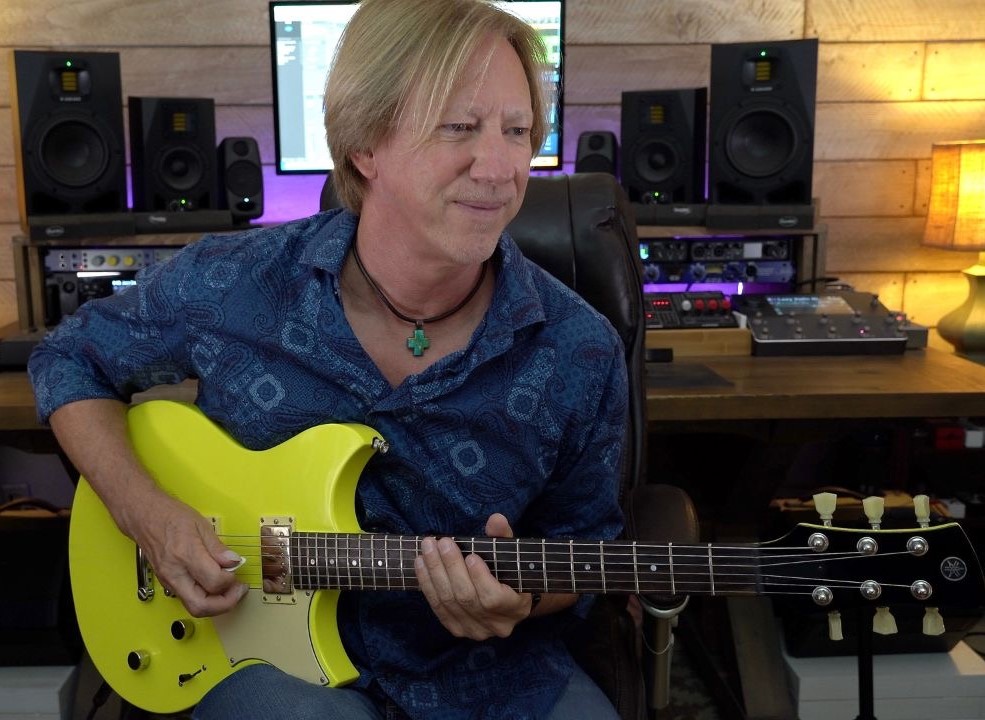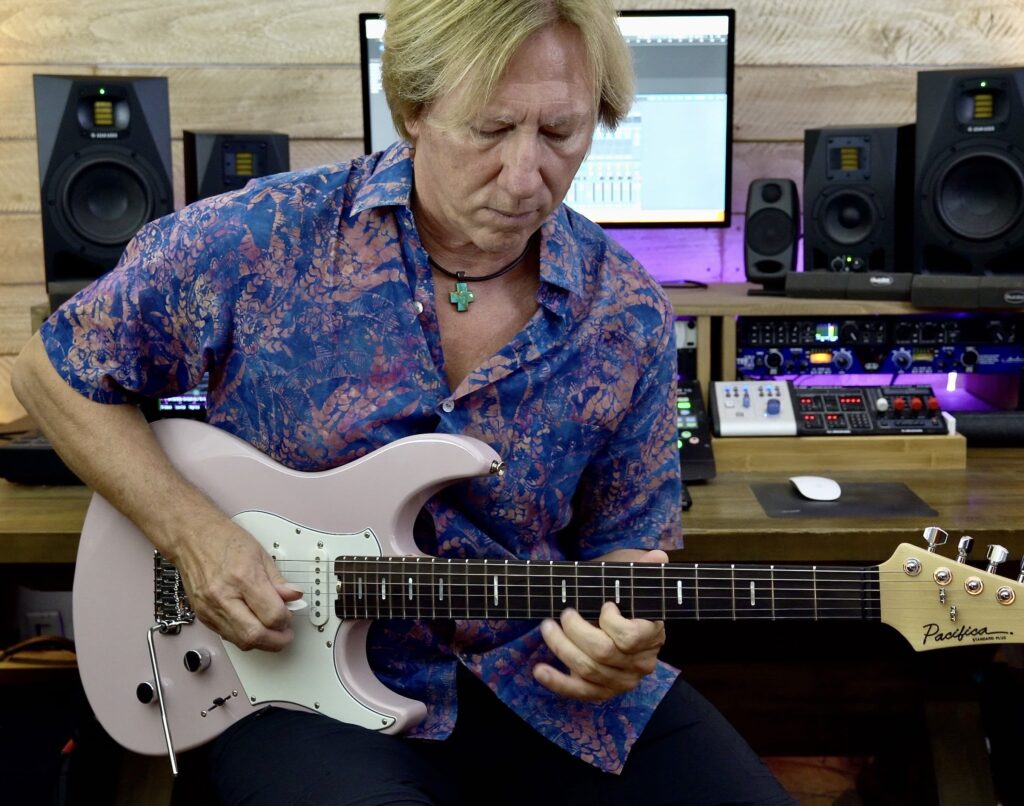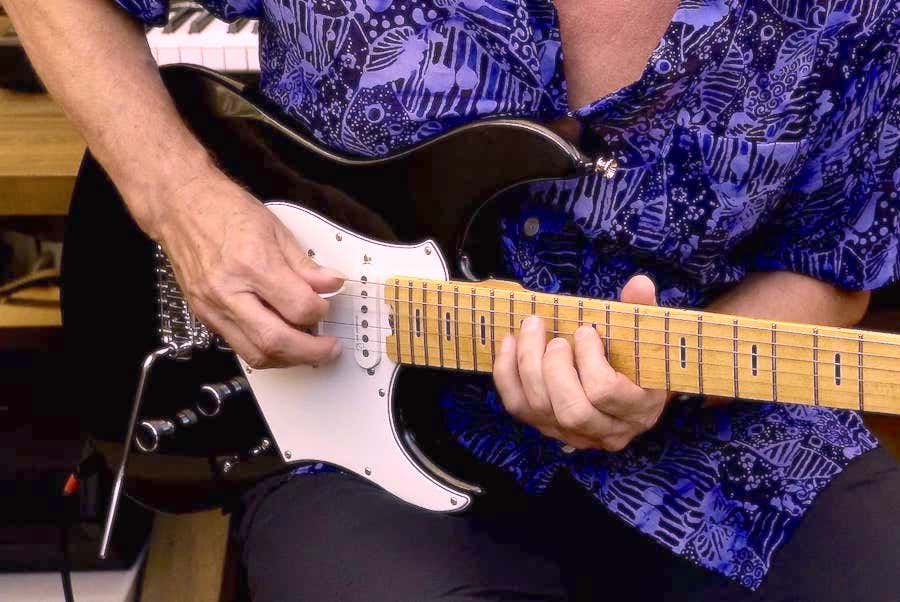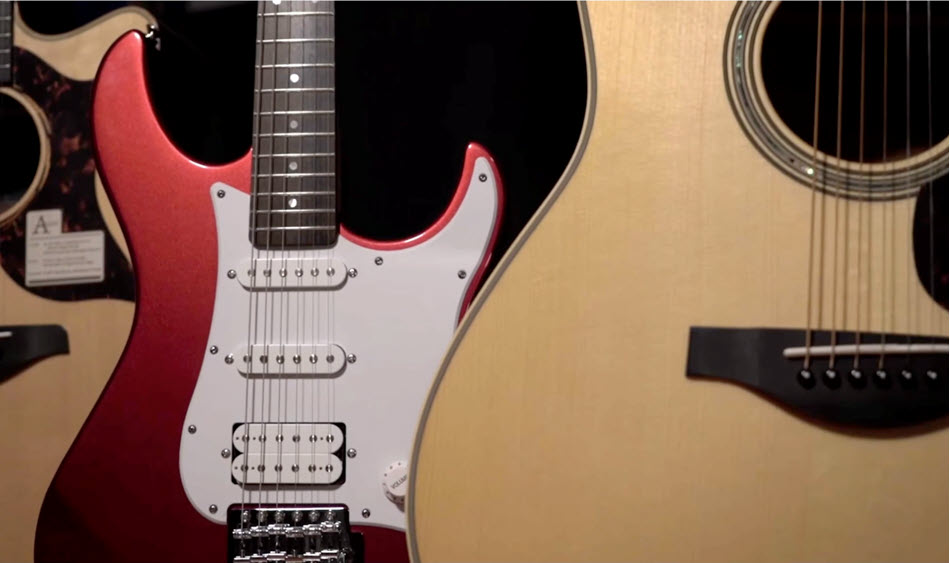Elevate Your Guitar Playing in 30 Days
The stairway to musical ascension.
Let’s be honest: We’ve all purchased a new guitar in hopes that it will serve to magically transform our playing to new heights of expression.
No doubt the exciting colors and sensual curves we love so much about our instruments can inspire new approaches, songs, and even an elevated sense of performance. And indeed, improvements in your technique may occur through sonic nirvana, extended hours of practice on the new axe, or simply because your latest guitar plays better than your old one.
But what happens when the initial rush of euphoria wears off? Do we find ourselves wandering aimlessly around a plateau of fretboard possibilities that lead us nowhere, endlessly searching for the Stairway to guitar-playing Heaven?
It’s my job as an educator to ascertain blockages, stagnation and/or lack of progress in my students. After all, it usually takes an outside perspective to reveal the quicksand.
The good news is that there are steps you can take to shift a low-gear malaise into high-octane territory. Here are three tips that will expand your guitar technique, musicality and chops within 30 days. This does mean you’ll have to do some work, though, so strap in and commit to upward, forward motion.
1. Improve Your Left/Right Hand Coordination
One of the main reasons guitar players don’t improve is that their picking hand isn’t in sync with their fretting hand.
This often occurs with single-note passages because downstrokes are naturally stronger than upstrokes, just as ascending fretting hand movements tend to be stronger and more fluid than those going from the pinky to the first finger. This can cause timing discrepancies between the picking hand and the finger placements on the fretboard.
A great way to address this imbalance is to employ an exercise using only upstrokes. Here’s how: Take the following chromatic passage of four notes on the low E-string: A-A#-B-C. Using only upstrokes, play the four notes, using each of your four fretting-hand fingers (one finger per fret). Repeat the sequence for about a minute, playing consistent eighth notes. Take a break, and then repeat the exercise, this time playing the notes from high to low: C-B-A#-A.
Repeat this sequence several times, then move on to the next string. You’ll notice that the string gauges will affect your precision; that’s why you’ll need to work across all six strings. Do this for 30 days and you’ll see massive improvement.
Note: Don’t employ this technique when performing; just use your regular alternate picking as usual.
2. Learn to Visualize
Visualizing chord shapes, scales and even song lyrics can help you achieve and retain muscle-memory proficiency without even touching your guitar.
When we visualize motor skills, we are actually creating the associated neural impulses and sending those mind messages to the fingers … even if we’re simply playing “air guitar.”
For example, play the A minor pentatonic scale at the fifth fret. As you do so, say each of the notes from low to high out loud (A-C-D-E-G-A-C-D-E-G-A-C), then play the scale back from high to low, once again saying each note out loud as you do so.
Now visualize fingering each of those notes, and name each note as you see them in your mind’s eye. Seeing your fingers play the scale shape and making the note name associations will solidify the scale architecture, the pitch intervals and the building blocks that create melodic sounds.
Repeat this exercise for 30 days, and each day, move the scale shape to a new fret location until you’ve done it in all 12 keys.
3. Supercharge Your Phrasing
Believe it or not, you can transform your lead guitar playing chops dramatically by simply shifting the start point of your licks across the beats in a bar.
Most guitar players have a tendency to start each phrase on the first downbeat of each bar (the “one”). But when you move the phrase to the second downbeat of the bar (the “two”), a whole new melodic and rhythmic world opens up.
Try it for yourself: Find your favorite jam track and count the beats. Take one note from an appropriate scale shape and play it on the downbeat of one. Now play the same note on the downbeat of two. Repeat until you’re comfortable playing that one note on each of the four beats in the bar, then take your favorite phrase and practice starting that lick on the downbeat of each beat in the measure.
After practicing this for 15 days, it’s time to turn up the heat. Take one note and play it on the upbeat of one (the “and”). Do this until you are comfortable, then move on to the upbeat of two, and so on.
Don’t try playing full phrases on the different upbeats until you can identify and perform this exercise using a single note on all four upbeats. The hardest part of this application for most players is identifying the beat and its subdivisions. Once you can do that, you’ll be able to place your licks at any point within the bar.
Trust me, this is the cool factor you’ve been looking for. However, you’ll need to stay focused and work on it for a while before it begins to become part of your natural playing.
The Video
In this video, I demonstrate a couple of ways to elevate your melodic chops and phrasing prowess, with plenty of room at the end for you to jam over my chordal structure.
In the first eight measures, I use an E minor pentatonic scale, and I’m starting each of the four two-bar phrases on the downbeat of three. The space this leaves at the beginning of each two-bar section allows me to take a relaxed approach to the melodic lines. In addition, I’m starting each new lick on the last note of the previous phrase in order to add melodic motion.
To increase the challenge, the key modulates up a minor third to G (G minor pentatonic scale) for the next eight measures, though I stay in the same fretboard position. This helps to reinforce scale shape recognition, so try to do the same thing when it’s your turn to jam.
The Guitar
The guitar I’m playing in the video is a Yamaha Revstar Element RSE20 with a Neon Yellow finish. (I’ve named it “Neon Leon.”) Like all second-generation Revstar guitars, it has an acoustically-tuned chambered mahogany body for enhanced resonance, sustain and musicality. In addition, the jumbo frets on its 13″ radius rosewood fretboard keep the notes flowing and the intonation spot-on from the lowest to the highest notes.

The two Alnico V humbucking pickups on the RSE20 capture every nuance and translate them faithfully to your amplifier. The tones available from the three-way selector switch on the guitar can be further expanded by pulling up on the tone control. This “dry switch” feature effectively reduces the bass response of the pickups for a brighter sound.
The Wrap-Up
I know we’ve all hit the wall at times and found ourselves stuck in a wasteland of the same musical information. It’s a loop that leads nowhere.
And then there’s the maze of development options that may or may not lead to our next level of proficiency. The question is, which path of study do we choose to find our way out?
I always think the best approach is to determine what you are trying to achieve. Focus on the big picture and then take small steps towards that mountain. If you’re not sure what that big picture is yet, work on solid techniques, positive reinforcement of the skills you have, and above all, be proactive and prepared to put in some hard work. With that in mind, you can get where you want to go … and possibly a lot faster than you might think. In fact, you might be amazed at what you can achieve in just 30 days.
PHOTOGRAPHS COURTESY OF THE AUTHOR















